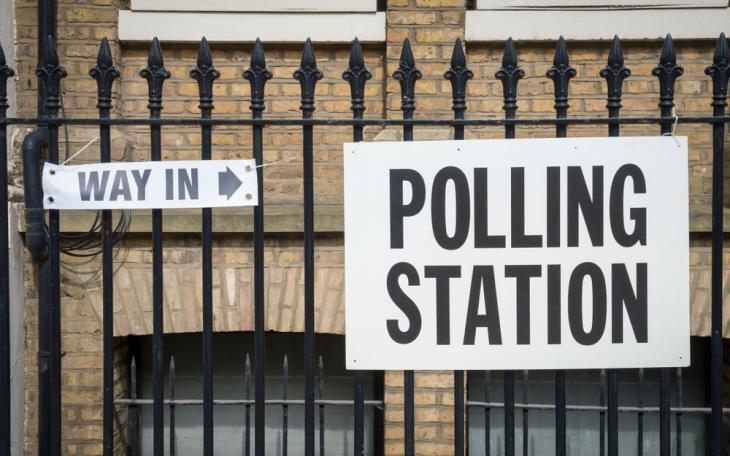The countdown is on – the day before the Local Elections

By Pearce Branigan & Vincent Carroll-Battaglino
With just over 12 hours to go until local elections ensue in the UK, our local government specialists Pearce Branigan and Vincent Carroll-Battaglino give us their predictions on the ground from both a Conservative and Labour perspective on how next Thursday 5 May might pan out.
The view from the campaign trail: Local Plans, not Prime Ministers will decide the Conservatives electoral fortunes
Less than 24 hours before polls open and the Conservatives are set to have a fight on their hands, with the latest YouGov poll (26-27 April) placing Labour ahead on 39 per cent and Conservatives second on 33 per cent.
Commentators have pointed to the collective fallout from Partygate and the Chancellors’ tax affairs as issues that have led to this lag in the polls for the Conservatives. However, this is arguably too lazy and simplistic an attempt to quantify any forthcoming electoral backlash.
Standing as a prospective council candidate for the Conservatives in the London Borough of Hackney, the majority of doorstep criticism (where it occurs) is over the policies of the incumbent council administration. Instances of criticism towards the national government have been few and far between, with those occasions being focussed on by households who indicated they had never (and would never) vote Conservative. So, what is influencing those swing voters?
While national political issues undoubtedly play a part with local elections, the campaign issues are more narrow than national policy. Stances towards crime, council tax, bin collections and potholes are the constant motivations when deciding who to back at the ballot box. However, the Conservatives have more to fear locally from residents’ opinions over the extent of property development and critically, the toxicity of an area’s local plan.
A number of local authorities including St Albans, Basildon and Welwyn Hatfield have attempted to “Dodge, Duck, Dip, Dive and Dodge”, progressing their local plans before the 5th May in order to avoid the electoral coup de grâce this would entail. The real test in many of these mostly Conservative-held areas is whether they can convince their electorate that they are the champions of ‘opposing inappropriate development / defending the Green Belt’. It is on this that the Conservatives’ fortunes will be decided.
While it is mooted that the Conservatives will struggle in the more metropolitan areas of the country, permeated with young professionals, traditional working class, socially conservative areas may prove their salvation. So, what does success look like? If the Party can retain and further entrench their presence in the red wall in places including Sunderland, Trafford, Dudley, Walsall and Calderdale, while staving off a cull of 100-150 seats, this will be a remarkable success. However, if we see more than 200 seats lost and councils in the Home Counties turning from the Conservatives, then defeat could turn into rout.
The real challenge for the Conservatives is to energise its supporters to go to the polls next Thursday, avoiding a low turnout that could see itself ejected from local government across regions of the UK.
From Labour's perspective
With the Conservative Party twelve years into government, in the middle of a fourth term, behind in the polls and reeling from their Prime Minister and Chancellor being issued fixed penalty notices by the police, and with over 40 percent of seats up for election being in London, this year’s local elections should be easy pickings for Labour. I say should.
On balance, there is a high chance that Labour will win the London boroughs of Barnet and Wandsworth. 2018 was a missed opportunity in both boroughs, but boundary changes have the potential to help Labour quite a bit this time round. This, along with the current national picture could finally see Labour over the line. The Conservatives are desperately relying on low council tax policy and “Boris is not on the ballot paper”. These two boroughs would be psychological blows to the Conservatives, but in terms of giving an indication of whether Keir Starmer’s Labour is on course for national government, they will want to see significant gains in any “Red Wall” and “bellwether” authorities. Results in these areas are the ones that let us know how far the electorate buys into the new leadership of the Labour Party.
Overall, over 200 seats gained will be seen as a decent night. If they can’t make major gains now, you’d wonder when else they can. Labour will also welcome any sign that the Green Party is struggling to make the electoral breakthrough they have been promising suggestable broadsheet journalists for years. The Greens have become Labour’s opposition in many “safe” Labour wards, and the response can be seen in local Labour politicians increasingly prioritising environmental policies to stave off any Green surge. Lack of a Green breakthrough will prove Labour can capture the vast bulk of the left-leaning anti-government vote, which is surely essential to winning power at the General Election. On balance, Labour has a good chance on this front and a Green breakthrough is unlikely.
Earlier in the campaign, Conservative group leaders in Sunderland, Trafford, Dudley and Walsall were talking tough, predicting gains and victories. But this was before the partygate issue translated into action against the most senior politicians in the land. If Labour cannot make progress and hold power easily in places like these, the only conclusion must be that they are still a good distance from the electorate on the fundamental issues that ordinary voters care about, whether these be “economic” or “cultural”. In reality, this will represent a bad night, whatever the gains and humungous majorities in London are. But don’t hold your breath that any lessons will be learned in quick order if so.








